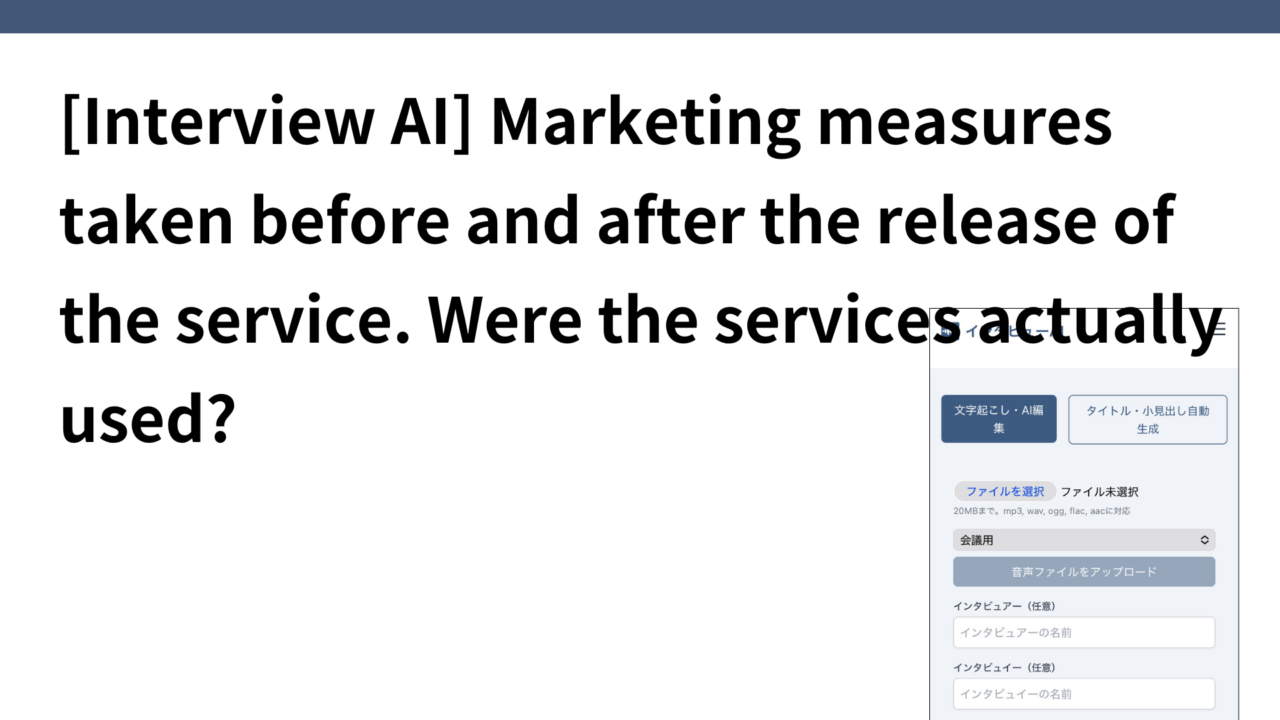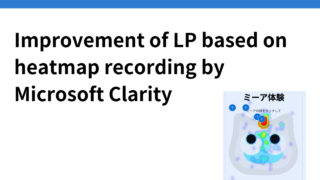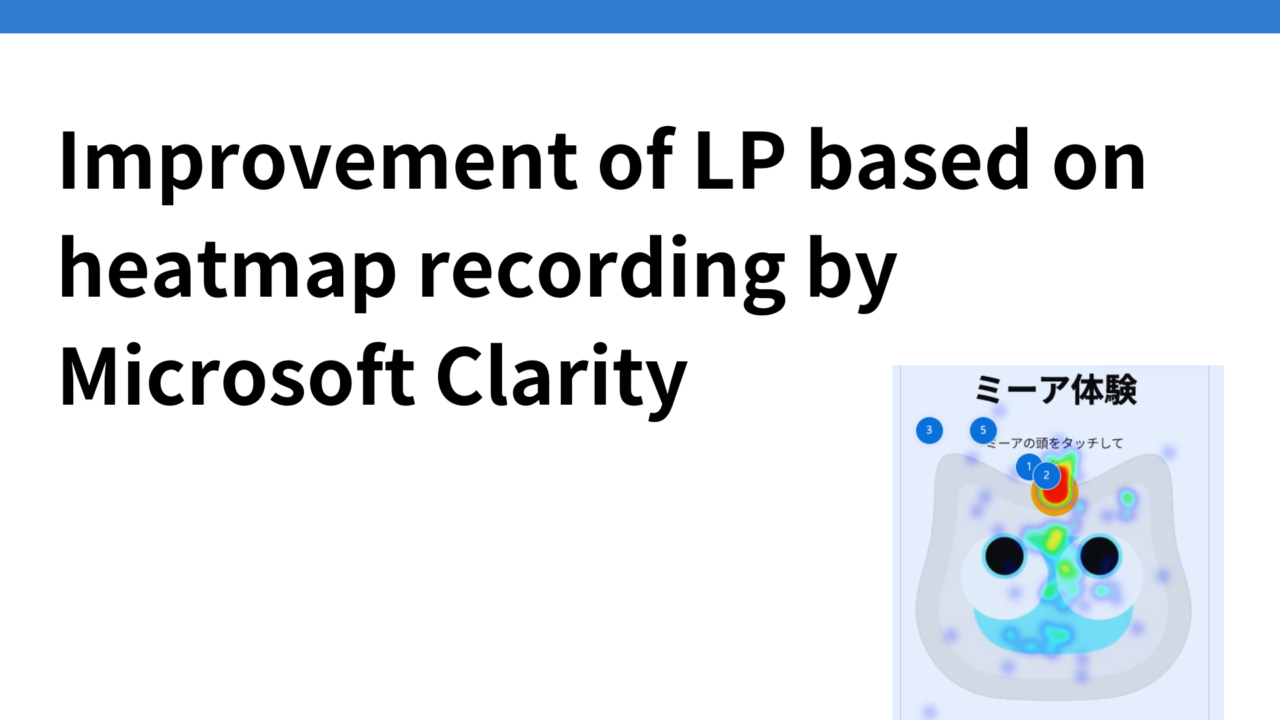Introduction.
I am developing an “interview AI” that can transcribe an hour of audio in 15 seconds and automatically convert it into a natural conversational format.
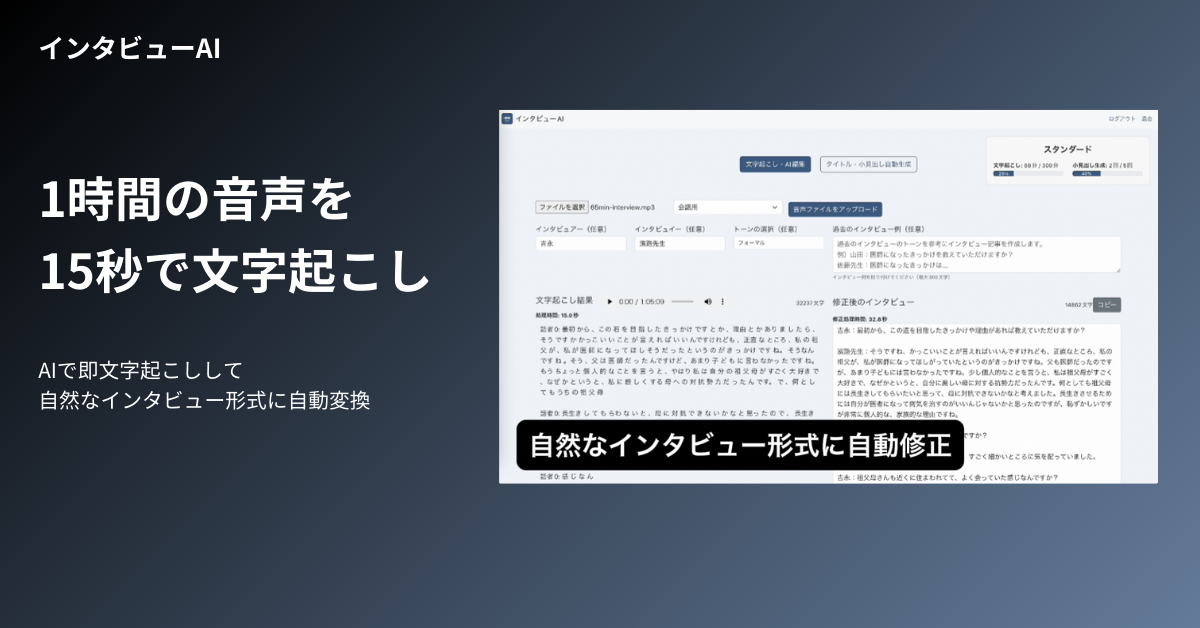
I released this service on Wednesday, 2024/10/16.
In this issue, I would like to make a memorandum of note focusing on the marketing measures taken before and after the release of the product.
Needs assessment with LP and Google Form before service release
My birthday is on October 1, and I really wanted to finish the development in time for my birthday, but I did not finish.
However, as of 10/1, we had some work done on the service LP, so we made the “Get started for free” button on the first view of the LP transition to a Google form instead of to the actual service page.
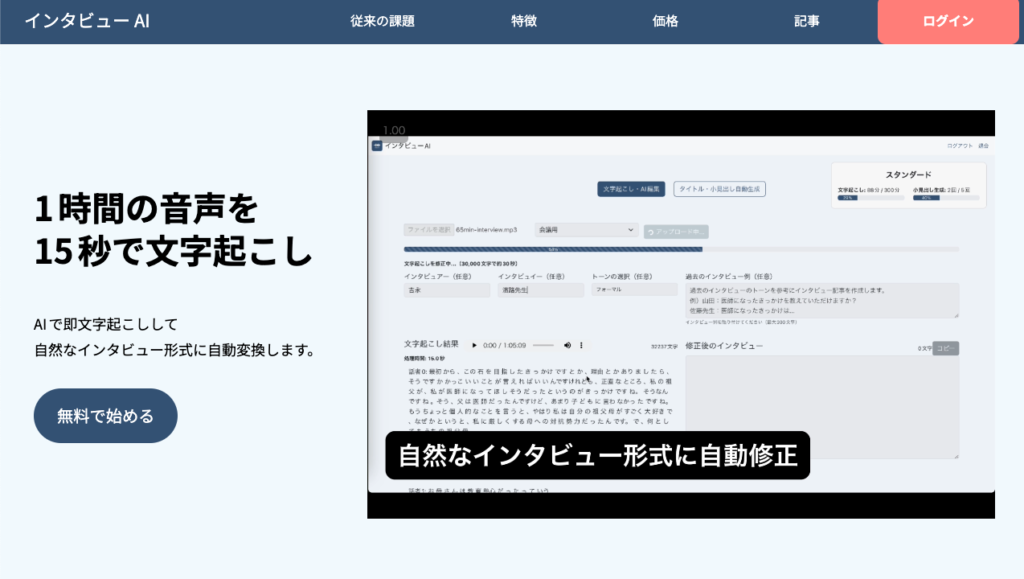
The Google Form that we transitioned to asked for an estimated release date and an email address if interested.
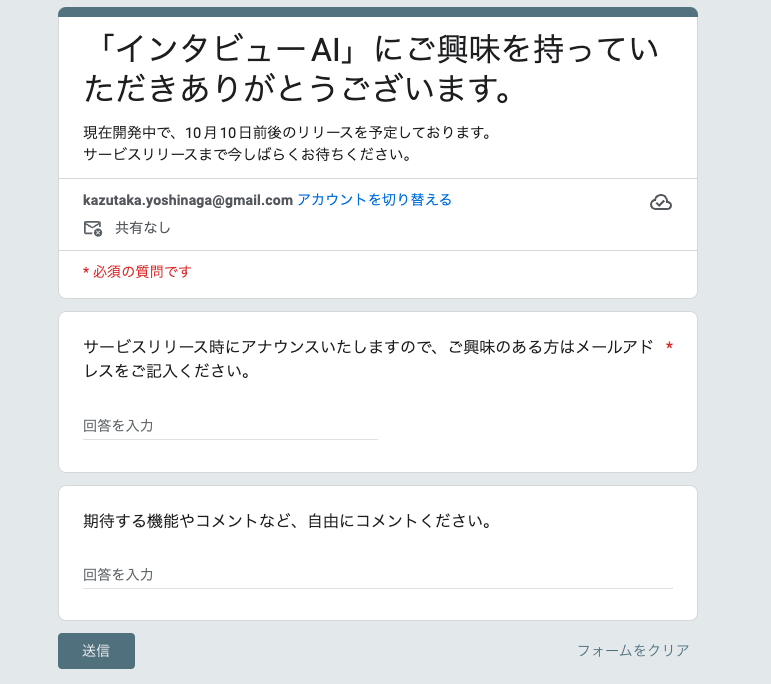
I didn’t do any promotion for the LP, but just showed the information on my personal FB and Twitter, so I didn’t think anyone would reach the Google Form in the first place, but in fact, I received five email registrations in one week. I was surprised and happy.
It also motivated me to continue service development.
I digress a bit, but in a marketing book for startups called Traction,
If you create a good service, you will not be able to sell it alone. Entrepreneurs, especially if they are technology-driven, will neglect marketing. Entrepreneurs should devote 50% of their time to development and 50% to gaining traction.
It is stated that the company was not half as focused on marketing as it was on marketing before this release, but we were aware of the need to focus on marketing before the release as well.
Click here for an article on ” [Traction] 19 Channels for Startups to Grab Customers.
AB testing with FB/Instagram ads
A/B testing was started on Thursday, October 17, the day after its release, for 500 yen per day each for creating one short video and one still image as an FB/Instagram ad.
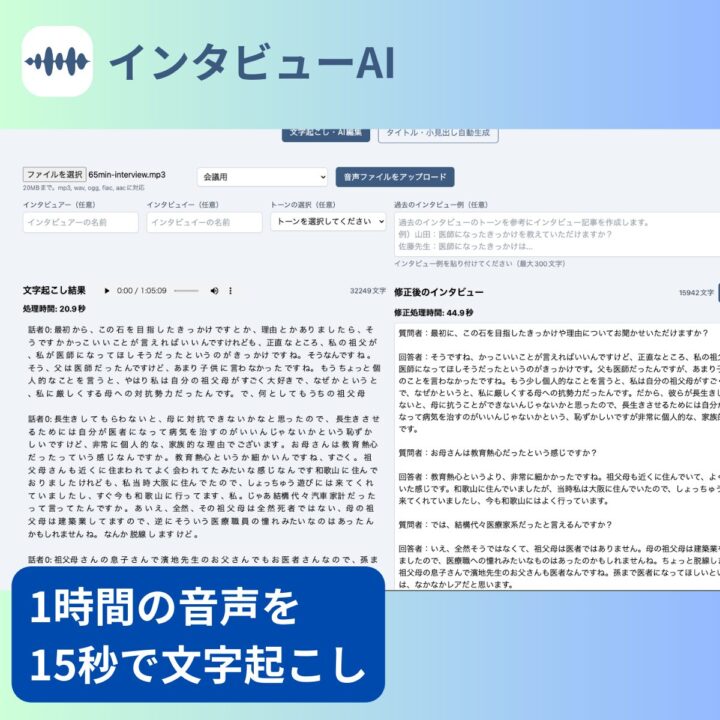
Five days later, FB sent me the results of the A/B test.
Contrary to expectations? The CPC for a single still image was lower than that for a short video by about 2/3. Therefore, as suggested by FB, we stopped advertising short videos and switched to still images only.
For the short video, I used a catchy illustration for the first 2-3 seconds of grabbing, but maybe that was not a good idea.
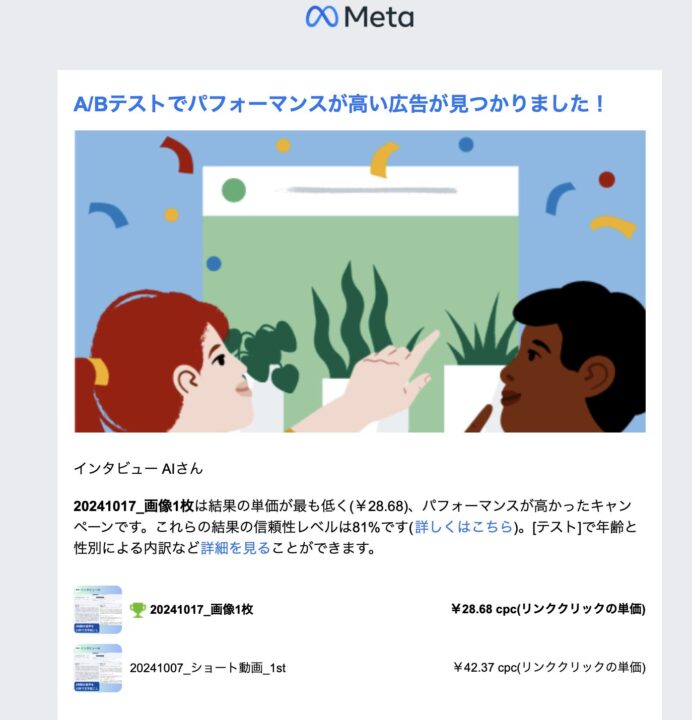
However, it is too expensive to spend 28 yen for a link click on the site (at the latest date, the CPC was 18 yen after learning optimization), so we need to find a more optimal channel by comparing with google listing ads, Twitter ads, etc. as well.
I feel that content marketing, which writes a lot of articles on agenda AI, generative AI-related issues, and AI-based business efficiency, would be a better fit to begin with.
Service website is responsive
The dashboard of the heatmap tool Microsoft Clarity shows that 80% of visitors open the site on mobile.
The service site is different, but here is an article about “Improving LPs based on [Microsoft Clarity] heatmap recordings”.
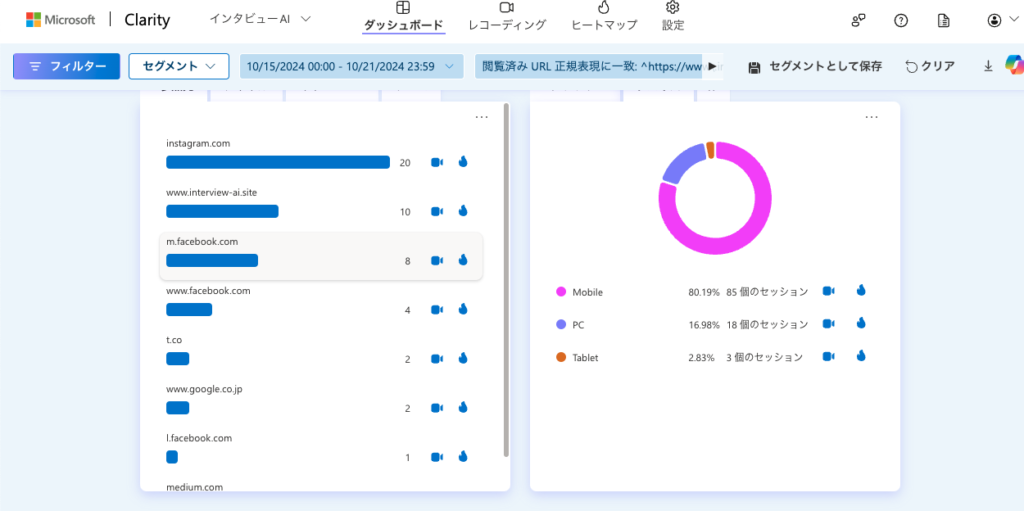
When the service site was viewed in mobile view as a test, it was discovered that responsive support was not taken into account.
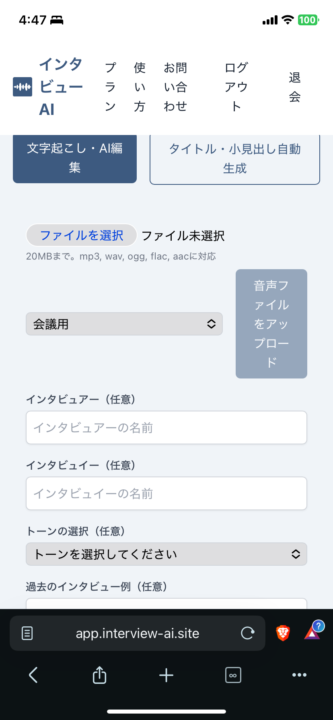
Navigation is now compatible with the hamburger menu, and the audio type selection pull-down and “Upload Audio File” buttons have been switched to a single-line display for mobile users.
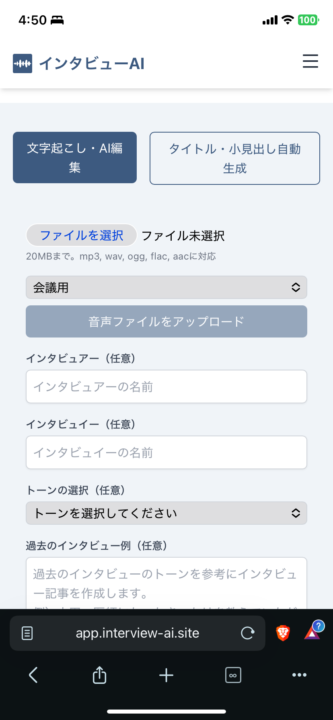
There were no problems on mobile in terms of the UIUX for the part where audio files are uploaded and transcription analysis is performed on mobile.
Were the services actually used?
As for the important question of whether the service was actually used? As for the “how many people actually used the service” question, we released the service on 10/17, and when we checked on the morning of 10/21, four people had used the free plan slots.
I had not implemented notifications to me when accounts were created, and since I had not been checking them daily since their release and the results of the FB/Instagram ads were not good, I did not think anyone would be using them yet for a trial, but I was surprised to see that they actually were.
This time, MongoDB is used as the database, and user information, current usage plan, and time spent using the transcription will be recorded.
The logs indicate that you all have only tried 10-15 minutes of audio transcription within the free 30-minute window as a free plan.
In addition, the automatic title and subheading generation function (titlesAndHeadingsUsage) was used zero times by all respondents, indicating that there is a greater need for the transcription and correction function (as hypothesized for this).
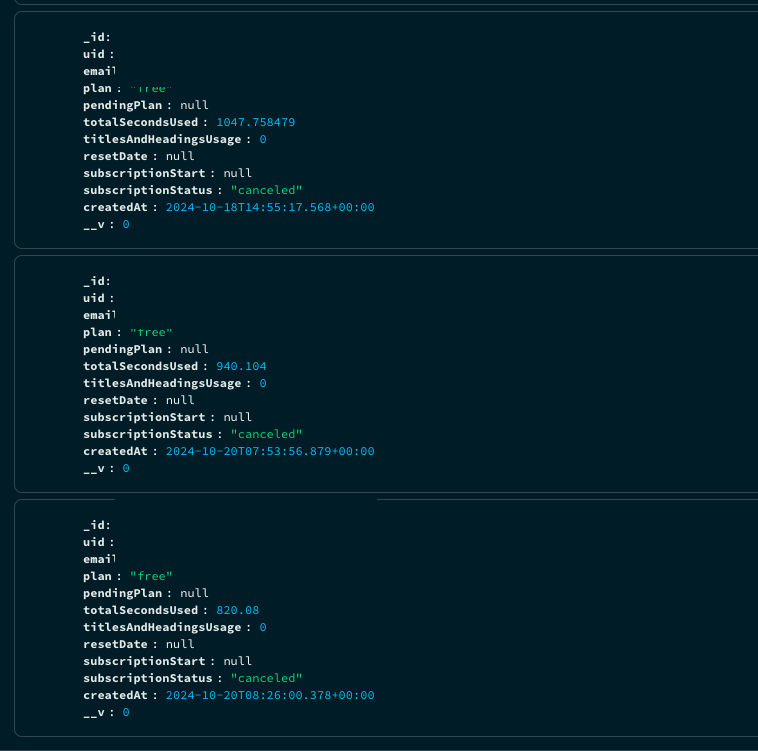
- I tried using it on a trial basis, but it ended up like this and took off.
- I’m glad I used the trial, but I don’t have any other audio files that I might transcribe right now.
There was a server error at the time of the transcription of one case, so it is possible that the expectation was lowered there.
I’ll give it a few more days.
